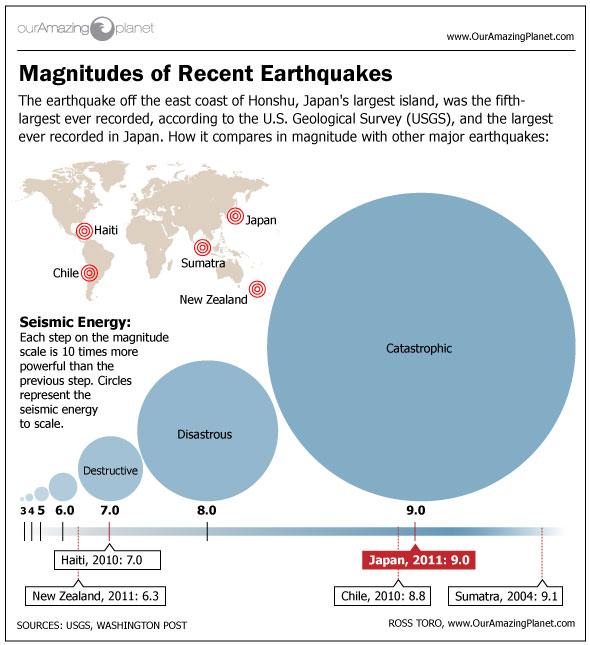
Japan Quake Aids Calif.'s Future Warning System

It doesn't sound like much, but just a few seconds of warning time could be helpful during an earthquake.
That is especially true in the United States, which may not be as prepared for a major quake as Japan, where a magnitude 9.0 earthquake and tsunami struck one year ago this weekend, killing more than 20,000 people. A future earthquake warning system in California, still years away for the public, could someday provide those precious few seconds to alert people that a quake is coming. Data from the Japan earthquake is helping test the system.
The plan is that a network of seismometers will detect the waves of an earthquake before those waves arrive in a big city. Information about the quake could then be beamed to people in the city in the few seconds before the ground begins to shake, said geophysicist Victor Tsai, of Caltech, who is working on the early warning system. The warnings could remove the "are we or aren't we having an earthquake?" confusion.
"Say you have five to 10 seconds of warning, maybe you could prepare yourself much better," Tsai said. "You could hide under your desk more easily."
The warning system could block the sucker-punch that earthquakes often deliver to a city's infrastructure. Early warnings would allow utilities to shut off the gas. Buildings could open their elevator doors so no one is trapped. Even trains could take detours to avoid riding into an impending disaster.
Early stages
Scientists in California are still in early stages of developing the techniques and framework for their warning system. Data from the Japan quake, considered the best-documented quake of all time, is helping the scientists test their warning algorithms.
Sign up for the Live Science daily newsletter now
Get the world’s most fascinating discoveries delivered straight to your inbox.
A skeleton network is in place today in California. Whenever a quake strikes, some 100 researchers get an early warning. California's transit agency also gets these preliminary early warnings. The magnitudes aren't always correct, but trained operators can plot the quake on a map and highlight problem areas, such as bridges or tunnels that could be damaged.
The system won't be ready for the public until it is more precise and better able to filter out false alarms, Tsai told OurAmazingPlanet.
Warnings later, better education today
Until that far-off day when the system is texting or tweeting earthquake warnings, better education could help save lives today, Tsai said.
"One of the main issues is that if people were better educated about what they should do in an earthquake, it would better save lives," Tsai said.
In the Japan quake, the shaking was very long — up to 400 seconds. If more people were very well educated, then they would have known that such a large amount of shaking could come only from a very large quake, possibly even a notorious subduction zone earthquake, which are known to trigger massive tsunamis. With that knowledge, more people could have fled inland to higher ground.
"That would have saved lives," Tsai said. "A lot of people don't know these things."
You can follow OurAmazingPlanet staff writer Brett Israel on Twitter: @btisrael. Follow OurAmazingPlanet for the latest in Earth science and exploration news on Twitter @OAPlanet and on Facebook.









